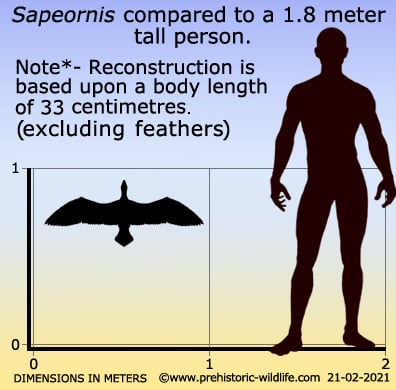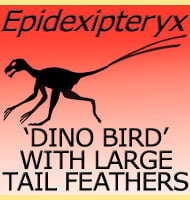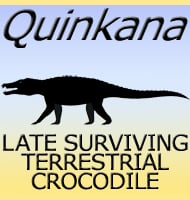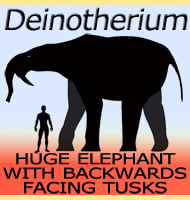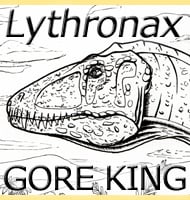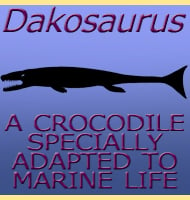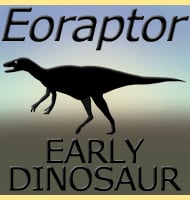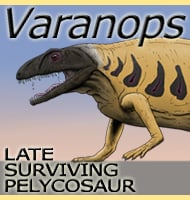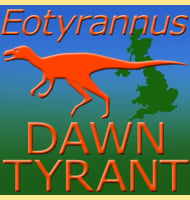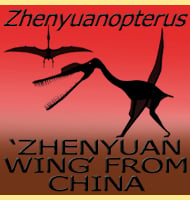In Depth
Sapeornis is named from a combination of SAPE and the Ancient Greek ‘ornis’ which means bird. SAPE is actually an acronym for the Society of Avian Palaeontology and Evolution. Also in 2002 another genus of bird named Omnivoropteryx was created by Stephen Czerkas and Qiang Ji. Omnivoropteryx was established as being separate to Sapeornis by the authors on the basis that the pubis is longer. At the time Sapeornis was not known by skull material and while Omnivoropteryx was, it was treated as valid. Since the naming however, skulls for Sapeornis have now been found, and these are near identical to the skull of Omnivoropteryx, which means that the only clear difference between the two genera is the length of the pubis. This has now led to speculation that Omnivoropteryx should become a synonym to Sapeornis, perhaps at a new species level as opposed to a separate genus.
Like with many of the early birds living in China during the early Cretaceous, Sapeornis shows a mix of characteristics that place it at some point between the early bird forms of the late Jurassic such as Archaeopteryx, and the more advanced bird forms that became prevalent towards the end of the late Cretaceous. Sapeornis had a rod-like pygostyle similar to Confuciusornis, though Sapeornis might have actually had a small number of tail flight feathers. Overall while the wings could have definitely been used for gliding, they did not have the same range of motion as modern birds and may have only been capable of limited flapping ability. The presence of a deeply keeled sternum to support strong pectoral muscles for flapping is still uncertain as one has not been found.
Sapeornis only had a small number of teeth that were present in the anterior tip of the upper jaw. Sapeornis is also known to have used gastroliths (small stones swallowed to help break up food), indicating that Sapeornis may have eaten harder food such as seeds. Sapeornis would not be the only early bird to do so as a seed eating diet has been confirmed for Jeholornis too. Like with most basal birds (and theropod dinosaurs), Sapeornis grew very slowly at first, before entering a rapid growth spurt upon approaching sexual maturity. Scleral ring analysis of Sapeornis indicates that it was diurnal, that is, active only during the daytime.
Further Reading
- Anatomy of the primitive bird Sapeornis chaoyangensis from the Early Cretaceous of Liaoning, China. - Zhonghe Zhou & Fucheng Zhang - 2003. - Scapular orientation in theropods and basal birds, and the origin of flapping flight - P. Senter - 2006. - Zhonghe Zhou & Fucheng Zhang - 2006. - A new sapeornithid bird from China and its implication for early avian evolution. - D. hu etal - 2010. - Nocturnality in Dinosaurs Inferred from Scleral Ring and Orbit Morphology. - L. Schmitz & R. Motani - 2011. – A subadult specimen of the Early Cretaceous bird Sapeornis chaoyangensis and a taxonomic reassessment of sapeornithids. – Journal of Vertebrate Paleontology. 32 (5): 1103–1112. – C. Gao, L. M. Chiappe, F. Zhang, D. L. Pomeroy, C. Shen, A. Chinsamy & M. O. Walsh – 2012. – Comment on the absence of ossified sternal elements in basal paravian dinosaurs. – Proceedings of the National Academy of Sciences, 111(50): E5334-E5334. – C. Foth – 2014.
